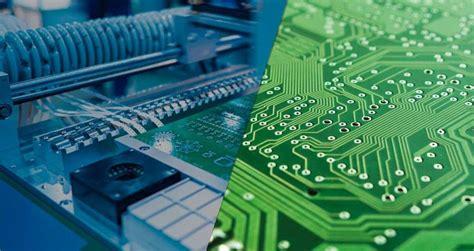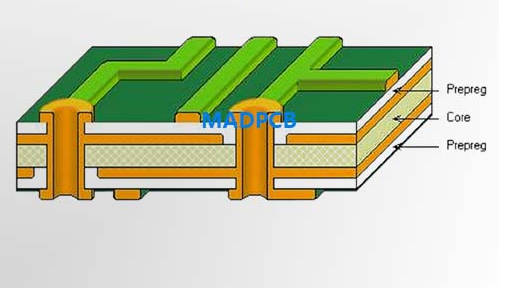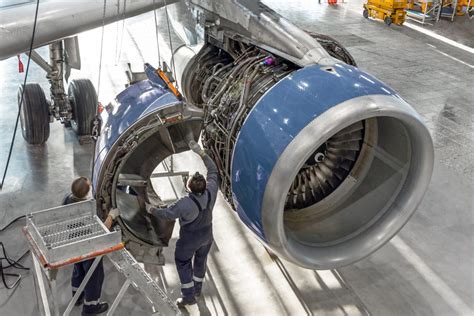Innovative Strategies in PCB Manufacturing and Assembly Modernization
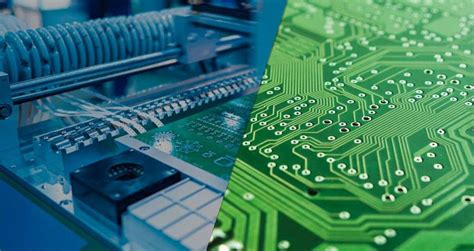
Key Takeaways
In the rapidly evolving field of PCB manufacturing and assembly, it is crucial to embrace innovative strategies that can significantly influence productivity and profitability. The integration of advanced automation technologies into pcba processes not only streamlines operations but also enhances overall precision. By adopting smart manufacturing practices, companies can achieve economies of scale while minimizing waste, thereby reducing costs associated with traditional methods. Implementing robust quality control measures is essential to ensure that each pcb assembly meets the stringent standards expected in today’s competitive electronics market. Furthermore, sustainability initiatives are becoming increasingly important, prompting manufacturers to explore eco-friendly materials and processes. As the industry continues to advance, it is important to stay informed about emerging trends and techniques that are reshaping PCB fabrication and assembly, driving forward an era characterized by innovation and excellence.
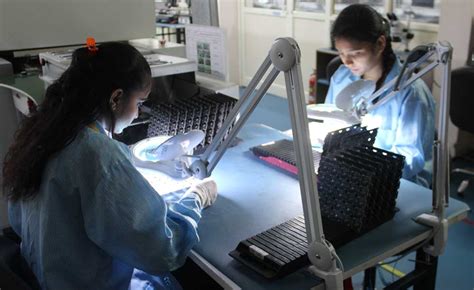
Introduction to PCB Manufacturing and Assembly: Current Trends
The landscape of PCB manufacturing and assembly is undergoing significant transformation as technological advancements and market demands evolve. Current trends suggest a growing emphasis on highly efficient, cost-effective, and quality-driven practices in both PCB assembly and the broader PCBA process. As electronic devices proliferate and become more complex, manufacturers are adopting innovative approaches to streamline operations, enabling faster production cycles while maintaining high standards. The integration of automation tools within the PCB assembly process has become increasingly common, facilitating precision and consistency that manual methods often lack.
Furthermore, companies are investing in cutting-edge technologies such as artificial intelligence and IoT (Internet of Things) to optimize supply chain management, reduce lead times, and enhance product traceability. These strategies not only lower costs but also aid in the swift identification of defects, significantly improving overall product quality. The use of advanced software for design simulation and prototyping also plays a crucial role in modernizing production capabilities, allowing for more robust testing before physical assembly occurs.
| Trend | Description |
|---|---|
| Automation | Integrating machinery to streamline the PCBA process for increased efficiency and accuracy. |
| AI & IoT | Leveraging smart technologies for improved supply chain logistics and defect detection. |
| Advanced Software | Utilizing design tools for effective prototyping and virtual testing ahead of physical production. |
As the electronics sector continues to burgeon, understanding these trends is vital for manufacturers aiming to remain competitive in an ever-changing market landscape while ensuring compliance with both local and global standards in electronics manufacturing.
Strategies for Enhancing Efficiency in PCB Production
In the rapidly evolving landscape of PCB manufacturing and assembly, enhancing efficiency is a crucial objective for industry players. One of the primary strategies involves the adoption of advanced methodologies that streamline production processes. This includes implementing lean manufacturing principles, focusing on minimizing waste while maximizing value. By analyzing each step in the PCBA process, manufacturers can identify and eliminate bottlenecks, ultimately leading to optimized workflows.
Additionally, investing in state-of-the-art equipment can significantly boost production rates. Automated systems allow for high-precision pcb assembly, reducing human error and enhancing consistency across batches. Moreover, using simulation software can provide insights into the assembly process beforehand, enabling companies to proactively adjust designs or methods to improve efficiency.
"Continuous improvement is key; even small changes can lead to significant advancements in productivity."
Training personnel on these new technologies is equally essential. A skilled workforce not only operates machinery more effectively but also contributes innovative ideas that can lead to better practices in pcb assembly operations. This commitment to employee development fosters a culture of efficiency that pays dividends over time.
Lastly, collaboration with suppliers ensures that high-quality materials are used in production, which helps maintain the durability and performance of the final product. By integrating these strategies into daily practices, companies can navigate challenges more adeptly and remain competitive within the electronics industry.

Leveraging New Technologies for Cost Reduction
In the rapidly evolving landscape of PCB manufacturing and assembly, companies are increasingly seeking innovative solutions to reduce costs without compromising quality. One of the most promising strategies involves the adoption of advanced technologies such as artificial intelligence and machine learning, which optimize production workflows in pcb assembly processes. By implementing these technologies, manufacturers can analyze vast amounts of data to identify inefficiencies, thereby streamlining operations and minimizing waste. Additionally, the integration of robotics and automation within pcba lines facilitates faster assembly times and consistency, ultimately leading to a reduction in labor costs. Another vital aspect is the use of cloud computing, which allows for real-time monitoring and improved collaboration across various stages of manufacturing. This connectivity can significantly enhance decision-making processes by providing instantaneous feedback on production metrics. Furthermore, additive manufacturing techniques are emerging as a game-changer for creating prototypes quickly and affordably, enabling companies to test designs more efficiently before full-scale production. By leveraging these new technologies strategically, organizations can not only lower their operational expenses but also position themselves competitively in the ever-evolving electronics industry landscape.
Quality Improvement Techniques in PCB Fabrication
In the ever-evolving field of PCB manufacturing and assembly, ensuring high quality in production is crucial for maintaining competitive advantage. One effective technique that has gained traction is the implementation of Design for Manufacturability (DFM) principles. By optimizing designs to simplify the pcb assembly process, manufacturers can significantly reduce the potential for errors and defects, leading to higher-quality printed circuit boards (PCBs). Additionally, the integration of advanced inspection technologies, such as automated optical inspection (AOI) systems, allows for real-time quality assessments during various stages of production. This proactive approach not only identifies flaws early but also minimizes waste and rework, further enhancing overall production efficiency.
Moreover, embracing statistical process control (SPC) plays a key role in monitoring and regulating manufacturing processes. By analyzing process data through various statistical methods, manufacturers can identify trends and variances that may lead to quality issues. Regular maintenance of equipment further contributes to quality improvement efforts; ensuring that machinery operates optimally is intrinsic to achieving consistent results in PCBA.
The application of lean manufacturing principles also serves to streamline production processes. This holistic approach focuses on eliminating waste while enhancing value from the customer’s viewpoint, which directly contributes to improved product quality. By fostering a culture of continuous improvement and employee involvement, organizations can ensure that every employee understands their role in maintaining quality standards throughout the pcb manufacturing lifecycle.
In conclusion, focusing on these innovative techniques not only enhances product quality but also establishes a solid foundation for future advancements in the electronics industry. By investing in quality improvement strategies such as DFM, real-time inspections, SPC, and lean practices, PCB manufacturers are better equipped to meet the growing demands of a rapidly changing technological landscape.

Sustainable Practices in PCB Manufacturing and Assembly
Sustainability has become a paramount consideration in the pcb manufacturing and assembly sectors, driven by both environmental concerns and the demand for more efficient production methods. Implementing eco-friendly materials and processes can significantly reduce the ecological footprint of pcba operations. For instance, utilizing lead-free solder and recyclable substrates not only adheres to global regulations but also appeals to environmentally conscious consumers. Additionally, energy efficiency in the manufacturing process is essential; practices such as optimizing machinery to minimize energy consumption lead to cost savings while promoting sustainability. Furthermore, waste reduction strategies, including reusing by-products from PCB fabrication, play a vital role in enhancing overall efficiency. By adopting these sustainable practices, companies can not only comply with environmental standards but also position themselves favorably within the competitive landscape of the electronics industry, paving the way for a greener future in pcb assembly and manufacturing. The shift towards sustainability is not merely a trend; it is an essential evolution that aligns profitability with ecological responsibility.
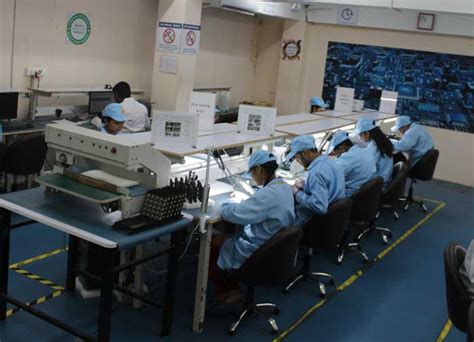
The Role of Automation in Modern PCB Processes
The integration of automation into PCB assembly and manufacturing processes marks a significant leap forward in the electronics industry. Automating various stages of production not only accelerates the pcba process but also minimizes human error, providing a higher consistency in quality. With automated systems, companies can streamline operations, from component placement to soldering and inspection. This level of efficiency ensures that outputs meet rigorous standards while maintaining cost-effectiveness. Additionally, automation technologies, such as robotics and machine vision systems, have revolutionized PCB fabrication by allowing for more precise handling of delicate components. This results in reduced waste and enhanced reliability of the end products. As manufacturers embrace these sophisticated solutions, they position themselves to compete effectively in an ever-evolving landscape, paving the way for future innovations that will further refine pcb assembly practices and enhance overall productivity within the industry. The ongoing advancements in automation are key components reshaping how manufacturers approach the complexities associated with modern pcba, ensuring they remain agile and responsive to market demands.

Future Outlook: Innovations Shaping PCB Industry Dynamics
As the PCB manufacturing and assembly landscape evolves, a plethora of innovations are emerging that promise to redefine industry dynamics. Among these, the integration of advanced technologies is particularly notable. Additive manufacturing, or 3D printing, is gaining traction, allowing for rapid prototyping and customization of PCBA (Printed Circuit Board Assembly) components. This shift not only enhances design flexibility but also accelerates the development cycle. Moreover, the use of smart factories equipped with real-time data analytics and Internet of Things (IoT) capabilities is enabling manufacturers to monitor production processes more effectively. This transparency aids in identifying bottlenecks and optimizing performance in pcb assembly lines.
Furthermore, sustainability is becoming a central focus in PCB production. Innovative materials that reduce environmental impact are being utilized, while energy-efficient processes are being implemented to minimize waste. These sustainable practices not only address regulatory pressures but also resonate with a growing consumer demand for eco-friendly electronics.
The advent of machine learning and automation tools also stands poised to transform quality control mechanisms within the industry. By utilizing predictive analytics, manufacturers can foresee potential defects before they occur, leading to improved product quality and reduced rework rates in pcba operations.
Overall, the future outlook for the PCB industry is driven by continuous innovation that emphasizes efficiency, sustainability, and quality improvement — factors that will be crucial in maintaining competitiveness in a rapidly changing global market.
Case Studies of Successful PCB Re-engineering Initiatives
In the rapidly evolving field of PCB assembly, various organizations have embraced re-engineering initiatives that have led to remarkable improvements in both process and product quality. One notable case involved a multinational electronics firm that implemented advanced automation techniques in its PCBA processes. By integrating robotic systems for component placement and soldering, the company not only increased its production speed but also significantly reduced human error, leading to a notable enhancement in product reliability. Another instance can be seen in a small-scale manufacturer that adopted innovative software solutions for real-time monitoring of production lines. This approach allowed for immediate feedback on quality issues, enabling proactive adjustments that minimized waste and maximized efficiency.
Moreover, a sustainable initiative within another company exemplified how eco-friendly materials could be integrated into PCB manufacturing without sacrificing performance. By switching to organic substrates, the company not only improved its environmental footprint but also attracted clients focused on sustainability, thereby expanding its market reach. These case studies illustrate how strategic re-engineering efforts can redefine operational capabilities and drive competitive advantage within the PCB assembly sector, ultimately shaping a more resilient future for the electronics industry at large.
Conclusion
In summary, the ongoing transformation within the PCB manufacturing and assembly sector underscores the significant impact of modern innovation on the overall efficiency and quality of production processes. As industries increasingly rely on pcba (printed circuit board assembly), it is crucial to embrace innovative methodologies and technologies that redefine traditional practices. Incorporating advanced automation systems not only enhances productivity but also streamlines pcb assembly processes, allowing manufacturers to meet stringent delivery timelines with reduced operational costs. The integration of sustainable practices adds another dimension, promoting eco-friendly approaches that resonate with contemporary consumer demands. Looking ahead, emerging technologies like artificial intelligence and machine learning are expected to facilitate further advancements, driving enhancements in quality control and precision in fabrication. The evolution of these strategies plays an essential role in shaping not just the future of pcb manufacturing but also establishing a more resilient and agile electronics industry capable of adapting to a rapidly changing market landscape.
FAQs
What is PCB assembly?
PCB assembly, or PCBA, is the process of soldering electronic components onto a printed circuit board (PCB) to create a functional device. This process is a crucial step in electronics manufacturing and significantly affects the overall performance and reliability of the final product.
What technologies are used in modern PCB assembly?
Modern PCB assembly employs various advanced technologies, including automated soldering methods, surface mount technology (SMT), and through-hole technology. These innovations enhance production speed and accuracy while minimizing defects.
How does automation improve PCB manufacturing?
Automation streamlines tasks such as component placement and soldering, which increases productivity and reduces human error. By utilizing robots and automated systems, manufacturers can achieve higher consistency in PCBA, leading to improved product quality.
What are the cost-saving measures in PCB assembly?
Cost savings in PCB assembly can be achieved through efficient resource management, optimizing production workflows, and investing in technology that enhances throughput. Techniques such as batch processing also contribute to lowering operational costs while maintaining quality.
How important is quality control in PCB manufacturing?
Quality control is paramount in PCB manufacturing to ensure reliability and performance. Implementing stringent testing procedures at various stages of production helps identify defects early on, thereby ensuring only high-quality finished products reach the market.
For more detailed insights on PCB assembly, please click here: Explore Innovative PCB Assembly Solutions

